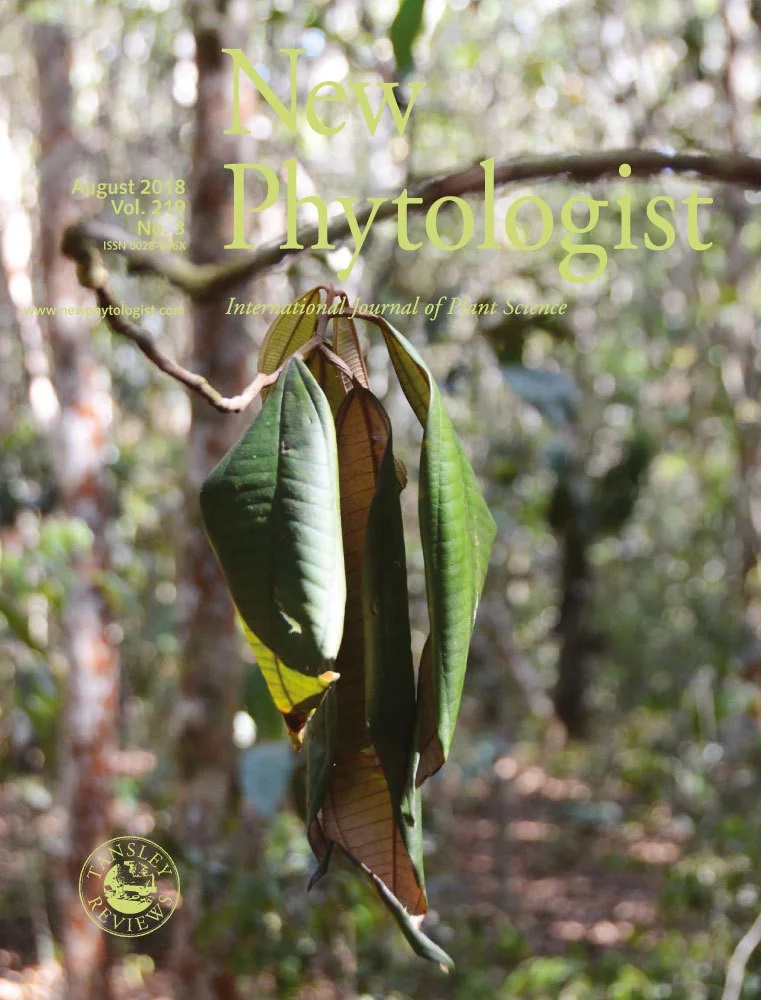Ver ítem
- xmlui.general.dspace_homeCentros e Institutos de InvestigaciónCIAP. Centro de Investigaciones AgropecuariasInstituto de Fisiología y Recursos Genéticos VegetalesArtículos científicosxmlui.ArtifactBrowser.ItemViewer.trail
- Inicio
- Centros e Institutos de Investigación
- CIAP. Centro de Investigaciones Agropecuarias
- Instituto de Fisiología y Recursos Genéticos Vegetales
- Artículos científicos
- Ver ítem
Cell remodeling and subtilase gene expression in the actinorhizal plant Discaria trinervis highlight host orchestration of intercellular Frankia colonization
Resumen
Nitrogen‐fixing filamentous Frankia colonize the root tissues of its actinorhizal host Discaria trinervis via an exclusively intercellular pathway. Here we present studies aimed at uncovering mechanisms associated with this little‐researched mode of root entry, and in particular the extent to which the host plant is an active partner during this process.
Detailed characterization of the expression patterns of infection‐associated actinorhizal host genes
[ver mas...]
Nitrogen‐fixing filamentous Frankia colonize the root tissues of its actinorhizal host Discaria trinervis via an exclusively intercellular pathway. Here we present studies aimed at uncovering mechanisms associated with this little‐researched mode of root entry, and in particular the extent to which the host plant is an active partner during this process.
Detailed characterization of the expression patterns of infection‐associated actinorhizal host genes has provided valuable tools to identify intercellular infection sites, thus allowing in vivo confocal microscopic studies of the early stages of Frankia colonization.
The subtilisin‐like serine protease gene Dt12, as well as its Casuarina glauca homolog Cg12, are specifically expressed at sites of Frankia intercellular colonization of D. trinervis outer root tissues. This is accompanied by nucleo‐cytoplasmic reorganization in the adjacent host cells and major remodeling of the intercellular apoplastic compartment.
These findings lead us to propose that the actinorhizal host plays a major role in modifying both the size and composition of the intercellular apoplast in order to accommodate the filamentous microsymbiont. The implications of these findings are discussed in the light of the analogies that can be made with the orchestrating role of host legumes during intracellular root hair colonization by nitrogen‐fixing rhizobia.
[Cerrar]

Autor
Fournier, Joëlle;
Imanishi, Leandro Ezequiel;
Chabaud, Mireille;
Abdou‐Pavy, Iltaf;
Genre, Andrea;
Brichet, Lukas;
Lascano, Hernan Ramiro;
Muñoz, Nacira Belen;
Vayssières, Alice;
Pirolles, Elodie;
Brottier, Laurent;
Gherbi, Hassen;
Hocher, Valérie;
Svistoonoff, Sergio;
Barker, David G.;
Wall, Luis Gabriel;
Fuente
New Phytologist 219 (3) : 1018-1030 (August 2018)
Fecha
2018-08
ISSN
0028-646X
1469-8137
1469-8137
Formato
pdf
Tipo de documento
artículo
Palabras Claves
Derechos de acceso
Restringido
 Excepto donde se diga explicitamente, este item se publica bajo la siguiente descripción: Creative Commons Attribution-NonCommercial-ShareAlike 2.5 Unported (CC BY-NC-SA 2.5)
Excepto donde se diga explicitamente, este item se publica bajo la siguiente descripción: Creative Commons Attribution-NonCommercial-ShareAlike 2.5 Unported (CC BY-NC-SA 2.5)

